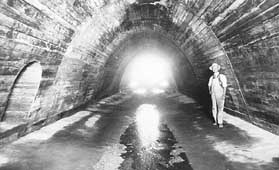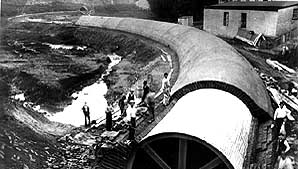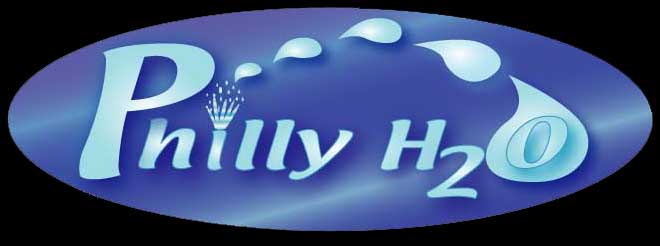It has been my pleasurable challenge, as a consultant to the Philadelphia Water Department (PWD) since 1998, to try to piece together the fascinating history of the city's many lost streams. PWD has preserved its own collection of historical material, which is a rich source of information, and I have supplemented that base with research in local libraries, historical societies, archives and relevant departments of the city government.
Besides many useful written records, I have uncovered a wide range of graphic material including paintings and drawings, maps and plans, photographs and surveys. This material stretches across the breadth of the city's long history, since changes were made in the landscape almost as soon as William Penn began building his new city along the Delaware River in 1682. The bottom line is that, over the course of several centuries, most of the city's surface streams have been channeled underground and incorporated into the city's 3,000 mile sewer system.
Enter keywords in box below to search
Philly H20
NOTE: Search works only when you are online, and results
may not include most recent updates.
PLEASE HELP US OUT!
We are in the process of updating PhillyH2O,
with a new look and, more importantly, with additional content that
better reflects what you're looking for when you come here. Please take
a minute to fill out a survey for us, which will help us create an improved
site that better serves your needs and interests. The survey is completely
anonymous. You can find it at this
link.
THANK YOU!
Adam Levine
Besides the main site links, here are a few highlights:
PWD
Water and Sewer History Course: Seven lessons online
***Online Exhibit: 100th Anniversary
of Water Filtration in Philadelphia***
The
main theme of Philly H2O can be found at
![]()
where I explore the many ways that the topography of the city has
been transformed over the years to facilitate drainage,
to improve public
health, and to promote real estate development.
A
GUIDE
TO
PhillyH20



SEARCHING THE SITE:
The Google search box above is the best way to find specific things
on PhillyH2O.
The "Archives" link provides detailed descriptions of all
material on the site.
At the "Maps" link, thumbnails and brief descriptions of the
maps can be found.
And as on any Web site, all pages are searchable with the "Find"
tool under the "Edit" toolbar in your browser.
LET ME KNOW WHAT YOU THINK OF PhillyH2O
Part of what makes this my work on this
site worthwhile is knowing that
people out there are using it. Please contact
me with any ideas about ways
to improve the site, material I might want to add, suggestions for links
to other sites, or any dead links.
PHOTO CAPTIONS AND CREDITS
Click links for larger versions
LEFT: Construction of Rock Run Sewer, 1922. This pipe
obliterated Rock Run,
once a tributary of Tacony Creek. (City Archives) [101
kb]
CENTER: Mill Creek Sewer, West Philadelphia, ca. 1883.
This large sewer, built over a 25-year period, ran for five
miles and obliterated the West Philadelphia stream for which it is named.
(PWD) [244 kb]
RIGHT: Sandy Run Sewer, 1942. Once finished, this pipe
obliterated most of Sandy Run,
a Pennypack Creek tributary. (City Archives)
[127 kb]
Website by Panacea
Design and Adam Levine
Page last updated May 16, 2018
